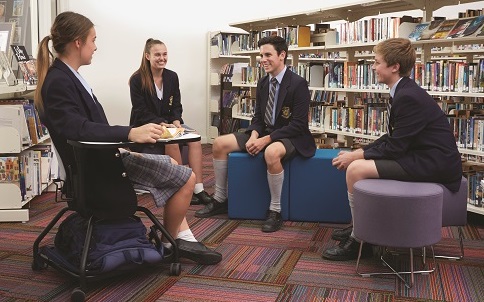Ergonomics for Students
Ergonomics is the study of people’s efficiency in their working environment and when it comes to educating young minds, the reports are in. Vibrant, flexible, and fun learning spaces improve student learning outcomes.
In stark contrast with the conventional classroom of previous generations, the modern learning environment is dynamic, welcoming and practically structured for activity based learning.
Featuring comfortable furnishings, bright colour palettes and modular spaces, today’s classroom encourages collaboration, noise and movement. Together the impact is significant. Ergonomic classrooms are proven to strengthen concentration, engagement, stimulation and overall performance.
Classroom tables and chairs that are ergonomically designed offer so much more than just, support, posture and comfort. They are designed for flexibility, so that furniture can be easily manoeuvred to suit the activity at hand, providing students and teachers with choices about how they learn or teach.
Previously little research was done into how the classroom design, layout and seating plan effected student learning. Until the emergence of New Generational Learning Spaces (NGLS). This modern research-based practice shifts to be more student-centred and replaces the former “one size fits all” approach.
Adaptable Furnishings
Anglican Church Grammar School and the University of Melbourne partnered together in 2012 to commence a six year study which supported the positive effects of NGLS, entitled “Making the Case for Space: The Effect of Learning Spaces on Teachers and Learning”. The study concluded that “the adaptability of space isn’t just about furniture that allows for multiple modalities and configurations. Its about teachers and students coming together and finding something new and exciting in their learning”.
The ideal is classroom furniture that can be configured for different learning environments, or specific learning objectives, such as portable furniture that enables mobility in active learning environments. Students can quickly and easily adapt their view of display screens, move into small groups for peer to peer learning and then convert when needed for tasks, requiring focused or independent learning.
Other research has found that when human beings are faced with non-pleasing environments, a state of restlessness emerges, that is not conducive with learning. Ergonomic solutions today adapt to various body types and scenarios.
Classroom chairs are now designed to support the body’s natural movement and varying postures or requirements. In fact chairs such as the Jari Active Stool actually promote movement, in order to stimulate focus and concentration.
Ergonomic classrooms enhance the physical look, feel and function of the classroom and its furnishings in order to maximise student motivation. When students – not to mention teachers, are spending more time in the classroom then they are their own homes, a warm almost homelike atmosphere can be pivotal for overall morale and performance.

